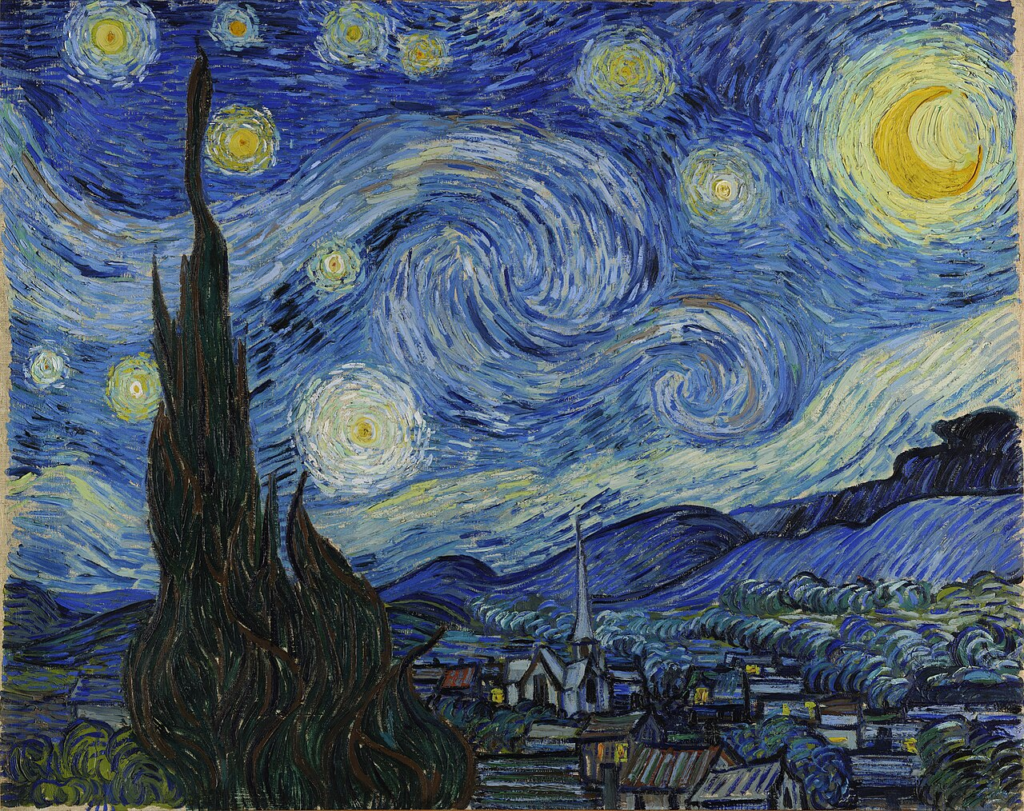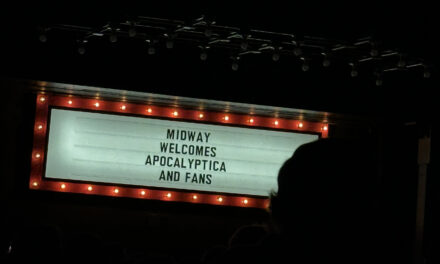
Jocelyn Morlock Night, herself (2017) for orchestra
Jocelyn Morlock One Black Spike (2008) for a capella choir
Stuart Beatch Chosen Family (2024) for a capella choir
Emilie Cecilia Lebel They do not shimmer like the dry grasses on the hills, or the leaves on the trees (2018) for orchestra
Ian Cusson Le loup de Lafontaine – Ballet Suite for Orchestra in Three Scenes (2019)
Edmonton Symphony Orchestra
conducted by Alexander Prior
Ballet Edmonton
Chronos Vocal Ensemble
conducted by Jordon Van Biert
Thursday, April 25 2024
The Winspear Centre
Review by Mark Morris
Contemporary Canadian music is alive and well, judging by the very large and enthusiastic audience for the ESO’s new music concert at the Winspear on Thursday, April 25th. Part of the attraction was return of Edmonton’s former Chief Conductor, Alexander Prior, and part the appearance of Edmonton’s Chronos Vocal Ensemble and Edmonton Ballet.
For this was something of a hybrid concert, with two orchestral works, two a capella choral works, a ballet, and a Purcell aria, ‘See, even night herself is here’ from The Fairy Queen, in an arrangement where the vocal line was played by the ESO’s Concertmaster, Robert Uchida.
The reason for the interloper from the 17th Century, which opened the concert, was the next piece. For the inspiration for the orchestral Night, herself, by the Manitoban composer Jocelyn Morlock, was that very aria, and the juxtaposition really worked.
Night, herself opens with an audibly Purcellian chaconne, and that baseline then morphs throughout the piece, turning up in different orchestral guises, before the original chaconne returns at the end of the piece.
That, though, was the extent of echoes of Purcell in this marvellous orchestral work, written in 2017. For if I had heard it without knowing the composer, I would have thought the 12-minute piece Italian, with strong echoes of the orchestral brilliance and haunting colour painting of Respighi, or Casella in ballet mode. The orchestration is vivid, clear and colourful, with the generally evocative writing occasionally punctuated by tuned percussion and drum. It’s playful as well as emotive, and just when it seems to start to lose its way, it turns into a stomping march, gradually getting louder and propelled by the bass drum, as if heard through mists, before slowing and then building to a sonorous climax, punctuated again by the side drum.
As it finished – and an assured and persuasive performance it was – how one regretted that it was not being recorded, and how one regretted CBC’s philistine decision to no longer record live Canadian orchestral concerts – how that shames Canada’s cultural heritage! It was Morlock’s last orchestral piece before her untimely death last year the age of 53. For those who missed this concert, and happen to be in Vancouver in September, there is a chance to hear it played by the Vancouver Symphony Orchestra (September 20-22). I do hope the VSO record it for their Online series.
The short (3 -minute) One Black Spike for unaccompanied choir by Morlock was something of an anti-climax after the orchestral work. It was one of five works commissioned to reflect a period in British Columbia’s history, and Morlock chose to evoke the Grand Trunk Pacific Railway, which connects Port Hardy with the B.C. interior. The undercurrent of the sounds of a railway journey were not enough for any kind of strong impact.
It did, though introduce the Chronos Vocal Ensemble, conducted by Jordon Van Biert, to the stage. Their major contribution was a recent work by a young Edmonton composer, Stuart Beatch, who also sings in the choir.
Chosen Friends was an a capella choral work, with texts drawn from the poetry of John Barton. I do wish the Winspear had projected the words for this work, as no-one in the audience could have been expected to know the texts, or, indeed, to have read Barton’s poetry. It is virtually impossible to hear all the words in a major choral work, be it a Monteverdi madrigal, and Mendelssohn psalm, or a Ligeti composition, especially in the Winspear acoustics. It is therefore essential for the audience to have the words in some form or another to fully understand and appreciate a choral work.
Yes, there were texts in the digital program notes, and yes they were given in dark mode, but who would want their cell phones distracting fellow audience members? All that was needed was a projected PowerPoint with four slides, one for each of the section of the work.
Maybe cells phones on is now the new norm, along with drinks in the hall – the Winspear has now sprouted drinks holders on the back of each seat, as if we are in an airplane, so perhaps we ought to have little screens for the text on the back of them too, like the Met.
As it was, it was difficult to fully appreciate this work without those words, as its often thick textures made it difficult to hear the details, so that only tantalizing snatches came out, including ‘forthright’, ‘bubble wrap’, ‘wingtips touching, shadows turning’, ‘of likeminded’…. Those textures in this four-movement work were often very beautiful, generally slow, with some effects – swoops, the click of a stopwatch – in the third movement, and it was sung with great commitment.
Fortunately, the first performance of this work by the Chronos Vocal Ensemble was recorded, and is available complete with the words of the poems and the score on YouTube. I do encourage anyone who heard this Winspear performance and did not read the texts to try it, for the powerful poems themselves are as thick textured and as alluring as the music.
The four poems are connected with important people in John Barton’s life: the first celebrates the Victoria artist James Gordaneer, who went on painting after being wheelchair-bound, the second recalls a visit to his favourite aunt in hospital, the third describes the birthday cakes emailed to the poet each year by his mother, and the fourth the chosen family of the title. Here is a verse from the first that gives an idea of the imagery and poetic sound:
“He paints his mornings out of, each canvas
A sail catching what flails inside a frame
He turns windward to make bell out, nexus
Of what could albatross the picture plane”
Once one has the words, the full impact of this work becomes apparent, and is very affecting, unfolding in the overall context of someone alienated from his immediate family, and finding a home in the chosen family of the title.
The opening piece in the second half of the concert was another fine discovery. Edmonton composer Emilie Cecilia Lebel’s They do not shimmer like the dry grasses on the hills, or the leaves on the trees (2018) for orchestra is not only an effective composition in its own right, but one of the best musical evocations of the prairie landscape I have heard. It was inspired by her journey across the Prairies to move to Edmonton, and title is a quote is from the Canadian writer Sheila Heti.
The general texture is of wide open spaces, with a constant play of held fundamental notes. Within this, little filigrees move slowly, with subtle shades of colour, like the murmurings of prairie grasses. Eventually brass lines emerge, like valleys winding through the plain, and the work finishes in the quietest of endings, with a high gong. They do not shimmer like the dry grasses on the hills, or the leaves on the trees, which was premiered by the Toronto Symphony Orchestra in 2019, deserves to be heard far beyond Canada, though I do hope Emilie Cecilia Lebel will consider shortening the unwieldy title.
The concert concluded with a ballet by the Ontario Métis-French Canadian composer Ian Cusson. As he explains, “Le loup de Lafontaine is a dance work based on a story, part-legend and part-history that takes place in the small French-speaking Ontario community of Lafontaine in 1902. The story is a cautionary tale of a diverse but divided community ravaged by a lone wolf.”
This was one of those dance works where the music had to be heard in the context of the ballet for an overall impact. The score was something of a surprise, for it reminded me strongly of Soviet ballets by composers of the pre-Glasnost age such as Shchedrin – lots of instrumental colour, neo-Romantic , spiced in one section with jazz elements, even the suggestions of sleigh bells at one point. The result well served the dancers, using the limited stage space in front of the orchestra to good effect, and with strong performances by the two unnamed principals.
What was missing was a really striking tune, but (like Soviet ballets) the music did highlight the orchestra, who played it with relish.
Overall, this was a compelling concert, with conductor Prior producing the best from the ESO, who sounded marvellous throughout. I do hope he is soon invited back, especially to do another concert like this. He has clearly taken to contemporary Canadian music, and the ESO couldn’t ask for a better advocate.




